Pakistan is the world’s fifth-most populous country yet contributes less than 1% of global CO2 emissions. Despite this, it is one of the countries most affected by climate change. The devastating floods this year that affected 33 million people are only the most recent and visible example. There are countless other climate disasters that have and continue to fundamentally alter the lives and livelihoods of millions of people. It is a travesty that those least responsible for climate change are the ones suffering most at the frontlines. The recent announcement at COP27 that richer countries will help fund loss and damage in poorer ones is welcome, but the funds are not yet available and the need in Pakistan – as elsewhere – is urgent right now.
As part of the Aga Khan Foundation (AKF) and the Aga Khan Agency for Habitat’s (AKAH) ongoing work to help build climate change resilience in Pakistan, over the last two years we have been partnering and working with remote communities in the north of the country through a European Union funded programme to help address disasters and bolster local communities’ ability to respond to emergencies. Central to the programme is the essential role women – who make up almost half of the programme – and differently abled people, in responding to these challenges.
A sparsely populated and mountainous region that is prone to seismic shocks, Gilgit-Baltistan lacks the resources required to mitigate and adapt to the growing number of climate related disasters. This vulnerability is compounded by limited access to medical equipment, emergency supplies, first aid responder training, and water and sanitation infrastructure.
In this photo essay, we take a journey through this mountainous region to learn about some of the areas that AKF and AKAH are working in, the challenges they present, and how we are collaboratively strengthening emergency and disaster preparedness responses.
Skardu, Gilgit-Baltistan
With a base in Skardu, the Aga Khan Agency for Habitat (AKAH) has been integral in assessing the most at-risk communities in Gilgit-Baltistan and building trust and relationships to enable productive working relationships. Through our locally-led approach, we have been able to listen to community needs and then design programmes that respond to those needs, benefitting almost 75,000 people through disaster management training, healthcare equipment, emergency response stockpiles and more.
Below you can see some of the landscape in Gilgit-Baltistan that can make reaching remote communities challenging.
Alchori, Shigar District
Over 30 miles north of Skardu is Alchori village in Shigar District. Shigar is known for being the ‘gateway’ to the mountains of the Karakoram. The Indus River that starts in China and empties out into the Indian Ocean flows through it.
In Alchori, more than 30 community members now make up a Community Emergency Response Team (CERT), trained through this programme to act as first responders when disasters and emergencies strike. As part of their training, CERTs learn how to identify the severity of injuries, administer basic first aid, stabilise and transport patients and use medical equipment. To embed learnings, simulations are run in training sessions to ensure communities are working together for faster action and the best possible outcomes.
“At first, I didn’t know how to attend to [emergency] situations, but after saving [a] man’s life, I feel proud that with this training, I can be helpful to others too and be capable of saving other people’s lives – of this I am proud.”
Yunan Zahra, CERT volunteer, Alchori, Shigar
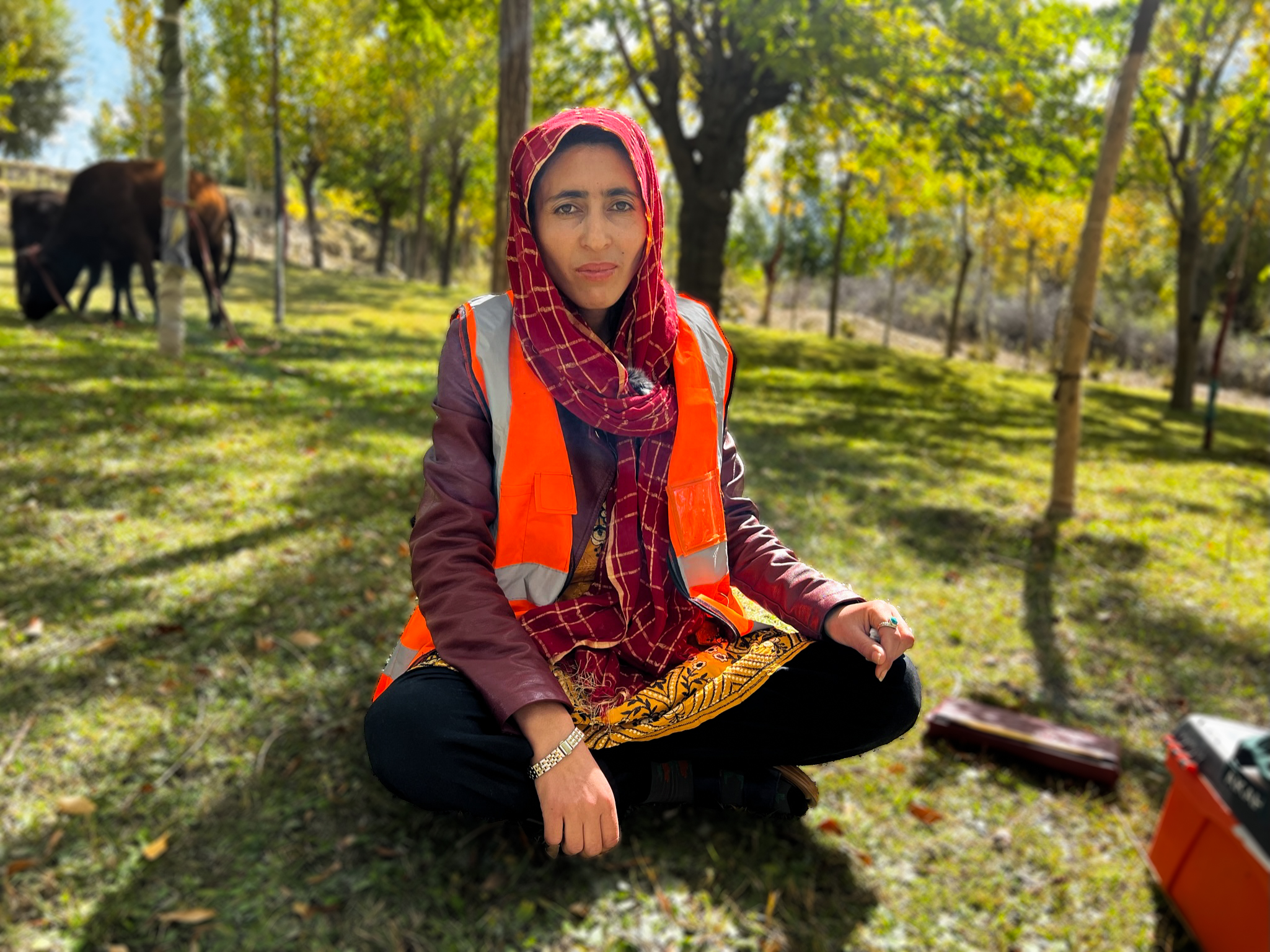
Markunja, Shigar District
Almost 10 kilometres downstream from Alchori is Markunja. Stationed here is a 20-bed rural health centre at the frontline of receiving casualties. Over the last two months, this medical centre has received between 15-20 emergency cases and has been used as a first-response facility, triaging cases.
Where possible, this health centre does one of three things – provides immediate patient treatment, admits patients at the facility for ongoing care, or refers more serious cases to the larger, better equipped hospital in Skardu – which can take anywhere between 50 minutes to three hours to reach. In order to support this facility, AKF and AKAH identified gaps in water, hygiene and sanitation facilities, as well as their knowledge and experience with managing mass causalities.
As well as strengthening healthcare in Markunja, AKF have been working with communities to develop CERT teams and Village Disaster Risk Management Committees (VDRMCs). VDRMCs map hazards and risks existing in villages and identify safer areas that can be used for evacuations in emergencies and natural disasters.
These committees are made up of key members of the community who analyse community vulnerabilities, list existing disasters and address gaps and needs for disaster risk reduction. Committees are made of members who have years of experience in actively volunteering in their communities and represent different sectors of civil society.
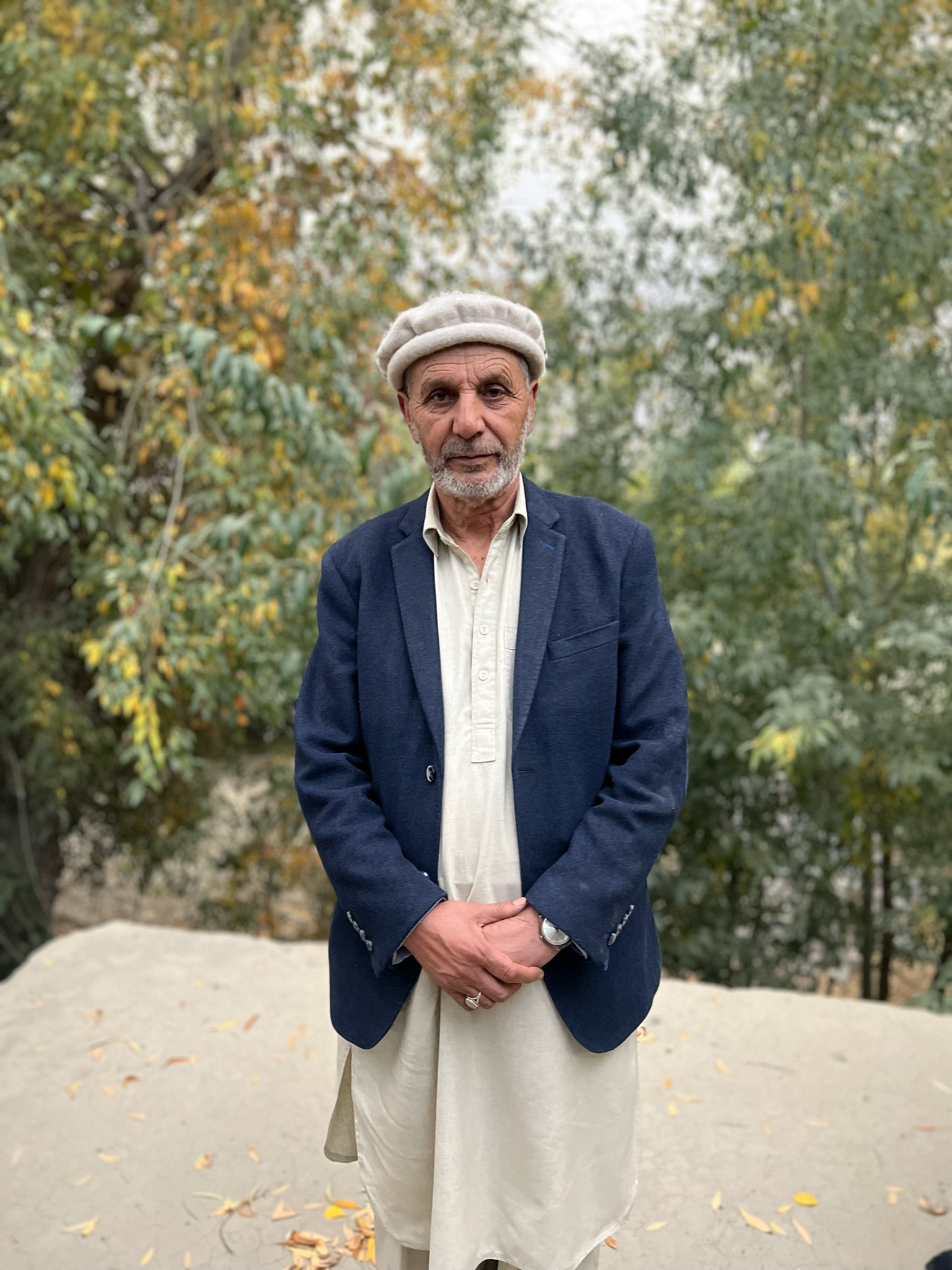
Wazir Fida Ali, Head of the VDRMC in Marjunka says: “Markunja lies on a fault line so there are more chances of getting earthquakes in our village. Through our training, we have learnt what to do when earthquakes happen and how best to protect ourselves and those around us. We also get a lot of snow and avalanches…and we now know how to lead our disaster response. A great thing about this project is also the involvement of women. There is strong volunteerism in our community, everyone feels as though it is their duty to get involved.”
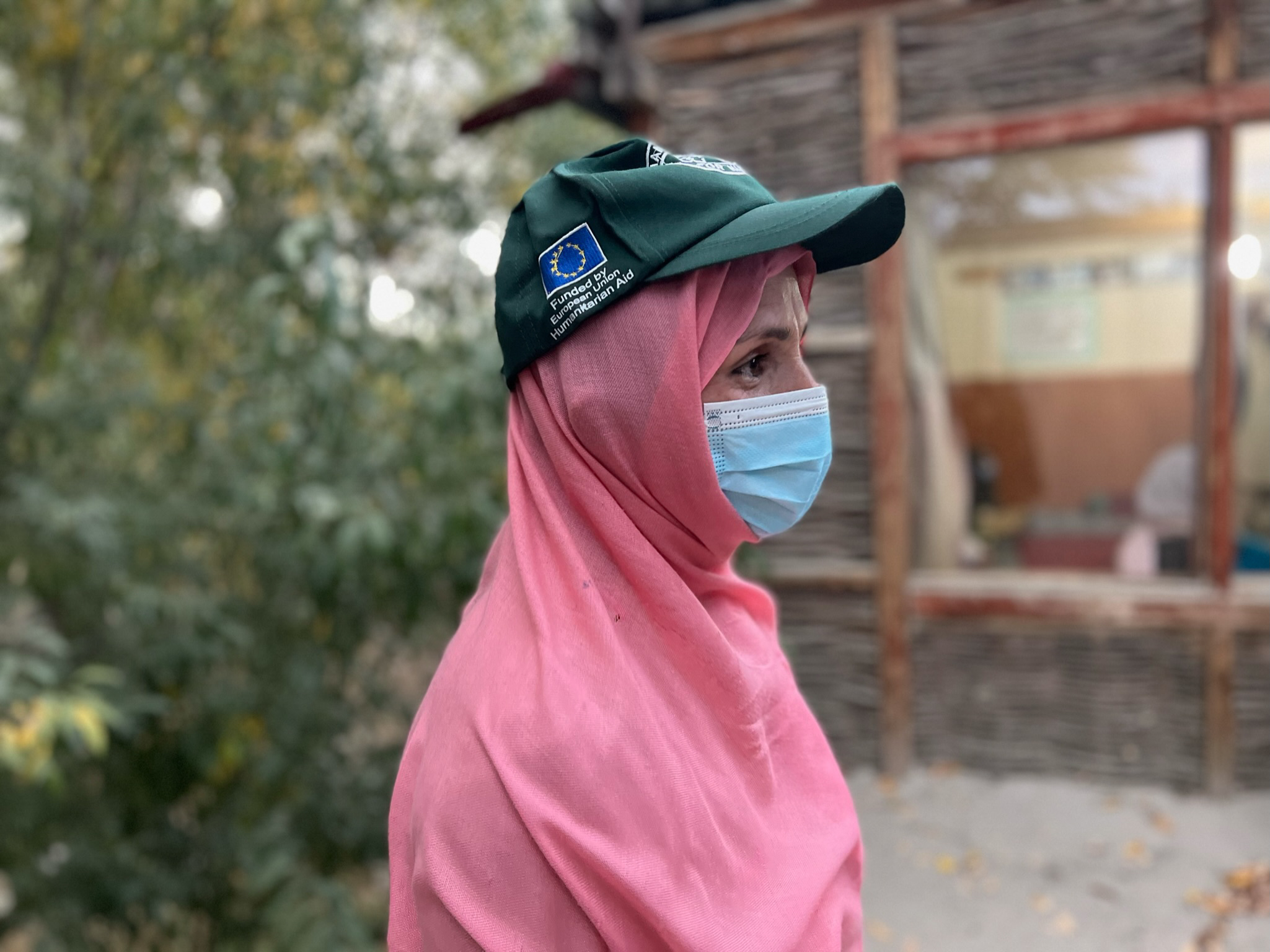
Shamim is part of a community emergency response team and volunteers alongside running her own business, a tea shop, whilst managing family life with three young children. Shamim proudly states, “I am a CERT volunteer, I’m not afraid of anything”.
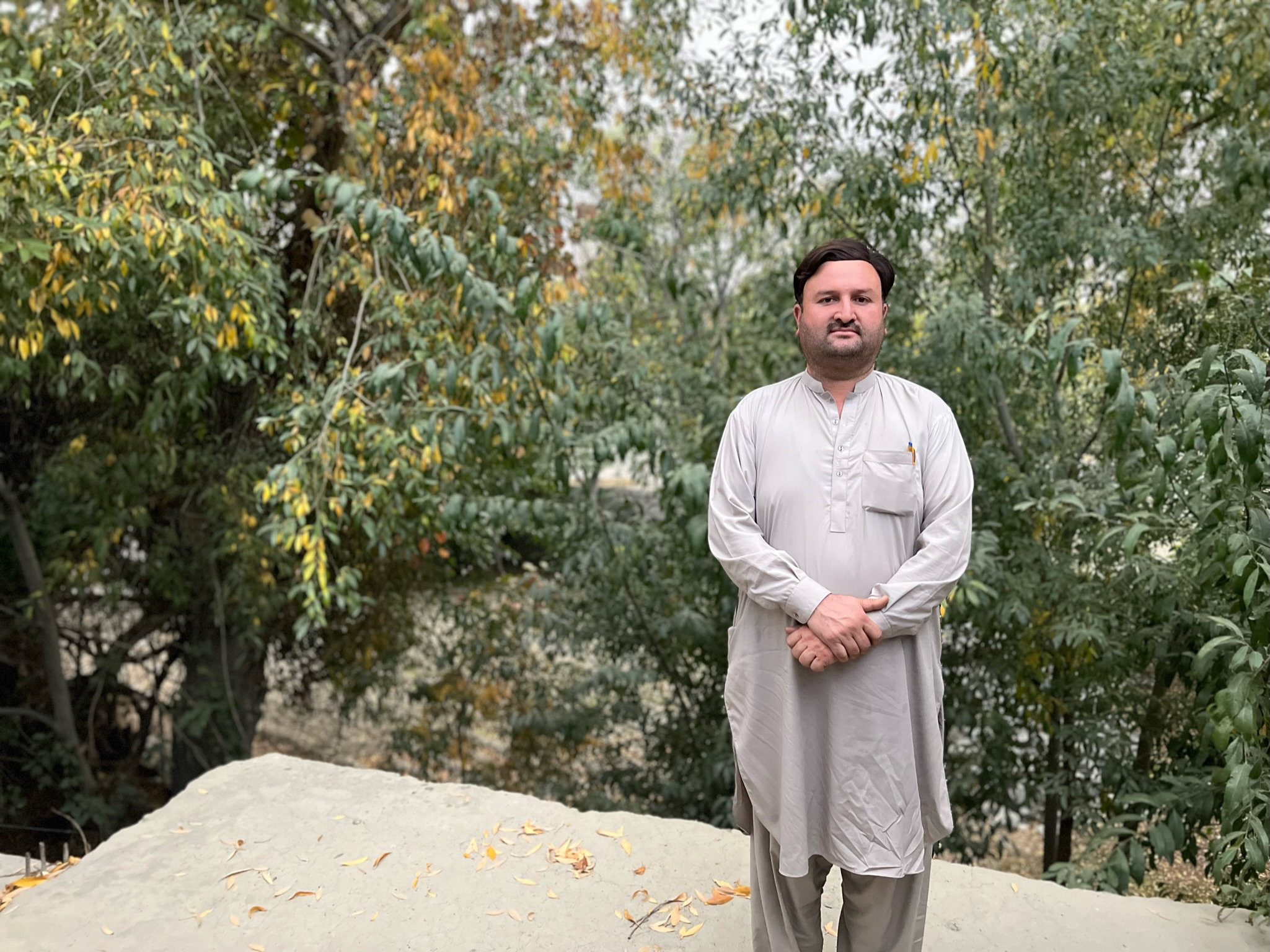
“Women taking part in VDRMCs and CERT training is essential. Women play an important role in our society – this is how societies operate properly and fairly.”
Imran Khan, VDRMC member, Marjunka, Shigar
Mehdiabad, Kharmang
Mehdiabad is almost 60 kilometres away from Marjunka – about an hour and a half drive south in the Kharmang District. Kharmang is known for its luscious agricultural fields and is home to many small villages.
Here, the programme supports a 10-bed rural health centre that provides primary care services to a large community. The centre deals with all emergency cases before referring patients to secondary care – which is an hour’s drive away. By supporting the facility with the provision of new medical equipment and training medical first responders on incident controls and emergencies, the healthcare system is better able to service the community after disasters strike.
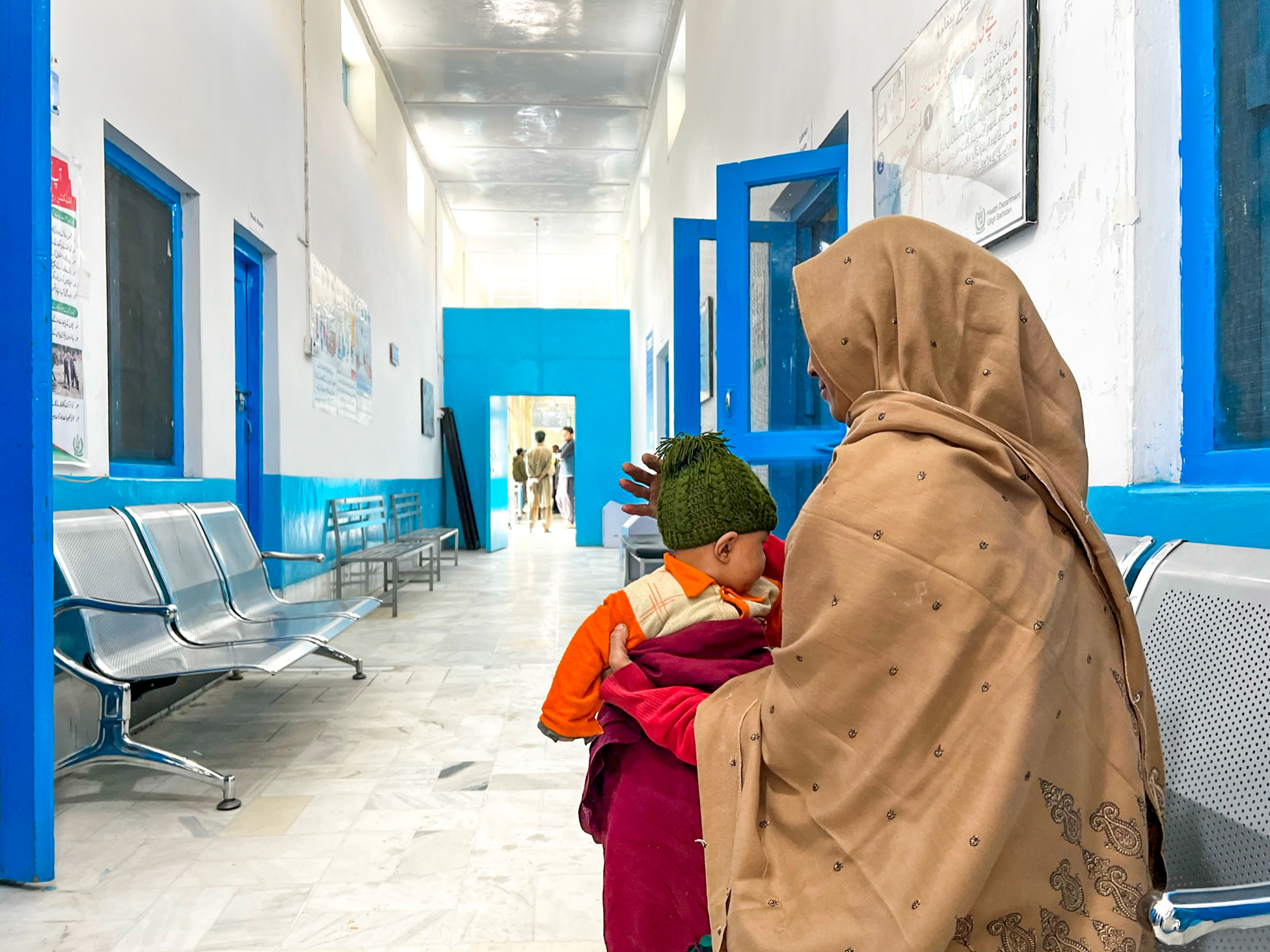
Fiza, a female health visitor at the centre in Mehdiabad says: “Through this project we have lots of trainings and equipment at our hospital including wheelchairs, stretchers, beds, laboratory equipment, cannulas. This has made our work easy; we can work quickly and efficiently. Before, we would rely on whatever was available to us. I’ve created a suction pipe out of a catheter and a syringe to help newborn babies after birth – but sometimes we were compromising on quality. The new equipment is of great help.”
“I’ve created a suction pipe out of a catheter and a syringe to help newborn babies after birth…the new equipment is of great help.”
Fiza, Female Health Visitor, Mehdiabad, Kharmang
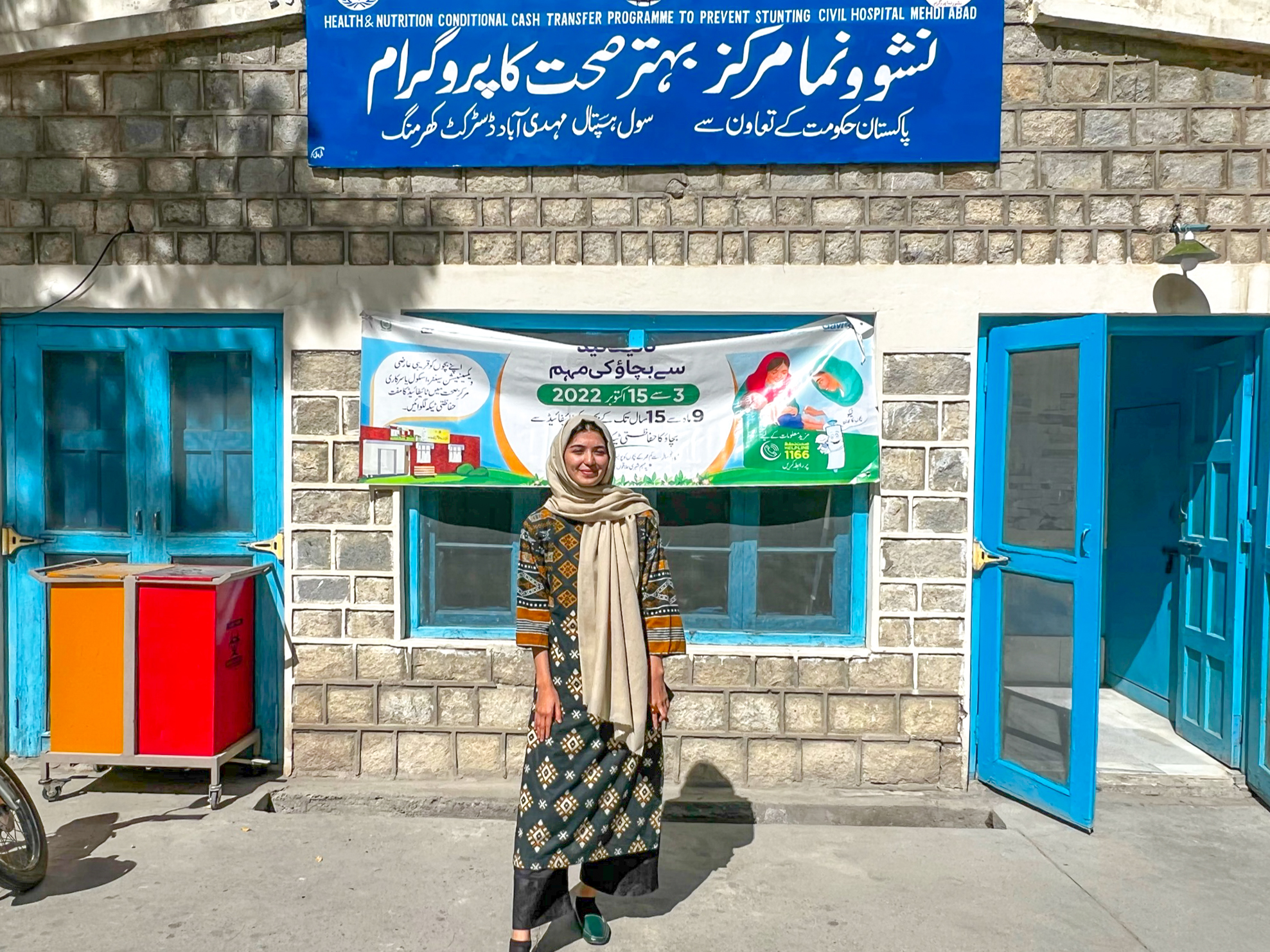
Sadaf Fatima, a doctor at the health centre in Medibabad shared: “We have been able to deal with emergencies much better than we used to. I recently graduated and came back here to this area – I’m a local. I want to help people and you can see there’s lots of need here…the medical kits and first responder trainings have been really helpful to our team and work.”
Pari, Kharmang District
Pari is a village in Kharmang – one of the villages affected recently by Pakistan’s 2022 floods. It was the first time this village has used the CERT training they had received for a large-scale disaster.
Working in conjunction with local government and voluntary bodies on-the-ground, the CERT teams safely evacuated communities and moved them into a community hall safehouse for two days. Volunteers helped warn neighbouring communities by going door to door and informing them of the situation, evacuating families from houses most at risk, and making arrangements for drinking water as the nearby supply was compromised.
Razia Batool, a mother of two, led the female CERT volunteers. When the floods hit, she managed the process of feeding those that were evacuated – three meals a day for 250 people was no mean feat.
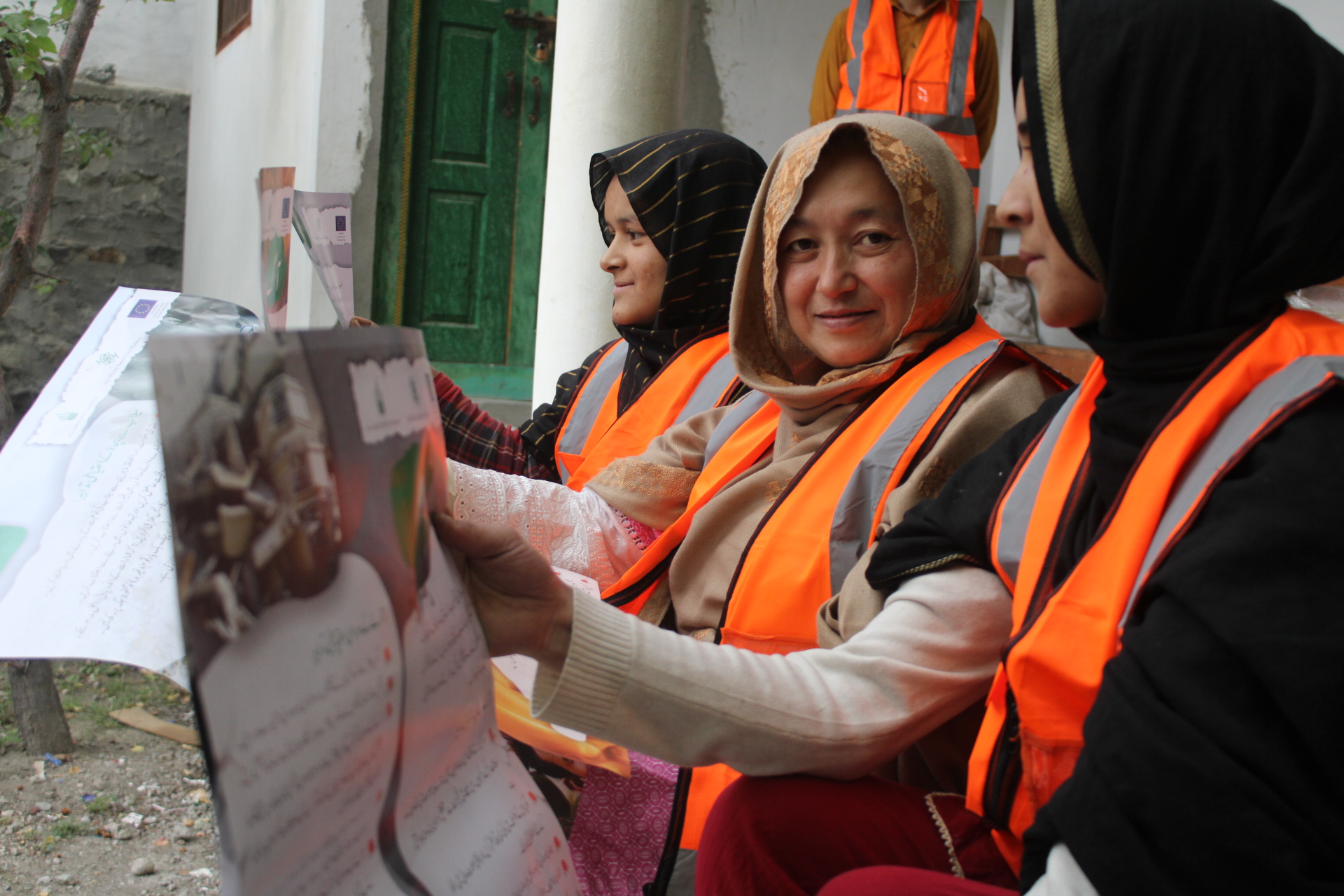
Razia shared: “It was a difficult situation to handle. A lot of the men were going out and attempting to save land and houses, but the women, children and elders were protected in the community hall. Some women were very upset after seeing the floods and were afraid of becoming homeless and losing everything. So, us female CERT volunteers were performing different roles, sometimes we were counselling people at the community centre or other times we were providing food for everyone. We had to be adaptable. Our roles were changing from situation to situation.”
As well as engaging more women in disaster preparedness, the programme has been openly promoting and encouraging differently abled people within these communities to become part of training and emergency planning response processes. When emergencies do take place, teams can respond efficiently and know how to bring the best of each persons’ abilities.
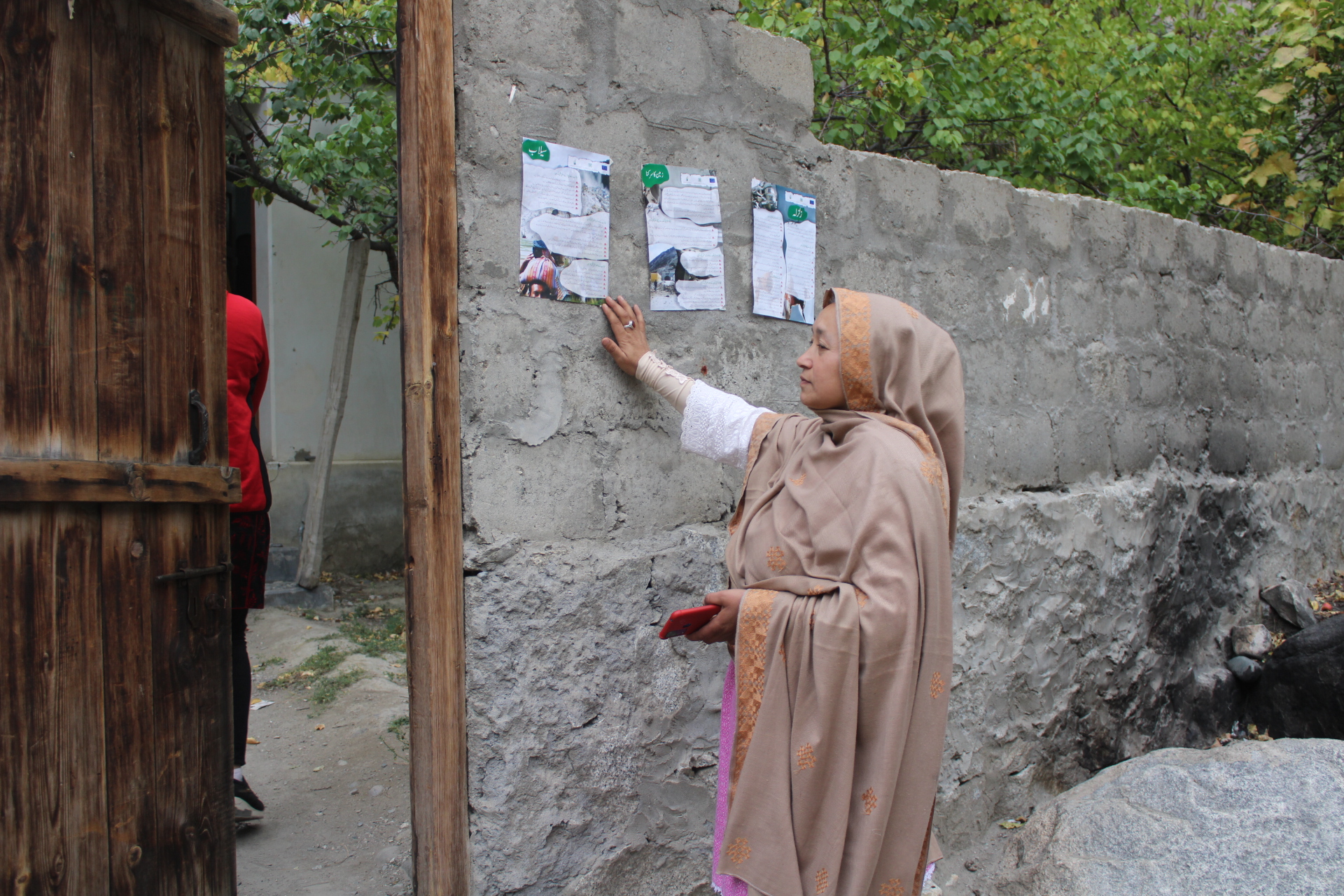
Rubab Batool is a 22-year-old CERT volunteer from Pari village was born with a congenital limb defect and has mobility issues with her legs. Rubab studies from home and helps with family life. She feels her CERT role gives her better confidence overall and enables her to interact more with her community.
Rubab says: “I love helping others. By helping others, I feel like I have more courage. Though I am not good at walking fast and I am short in height, I love working as a CERT volunteer. I am qualified at putting bandages on people who have injured themselves…Through this role, I get more chances to serve others.”
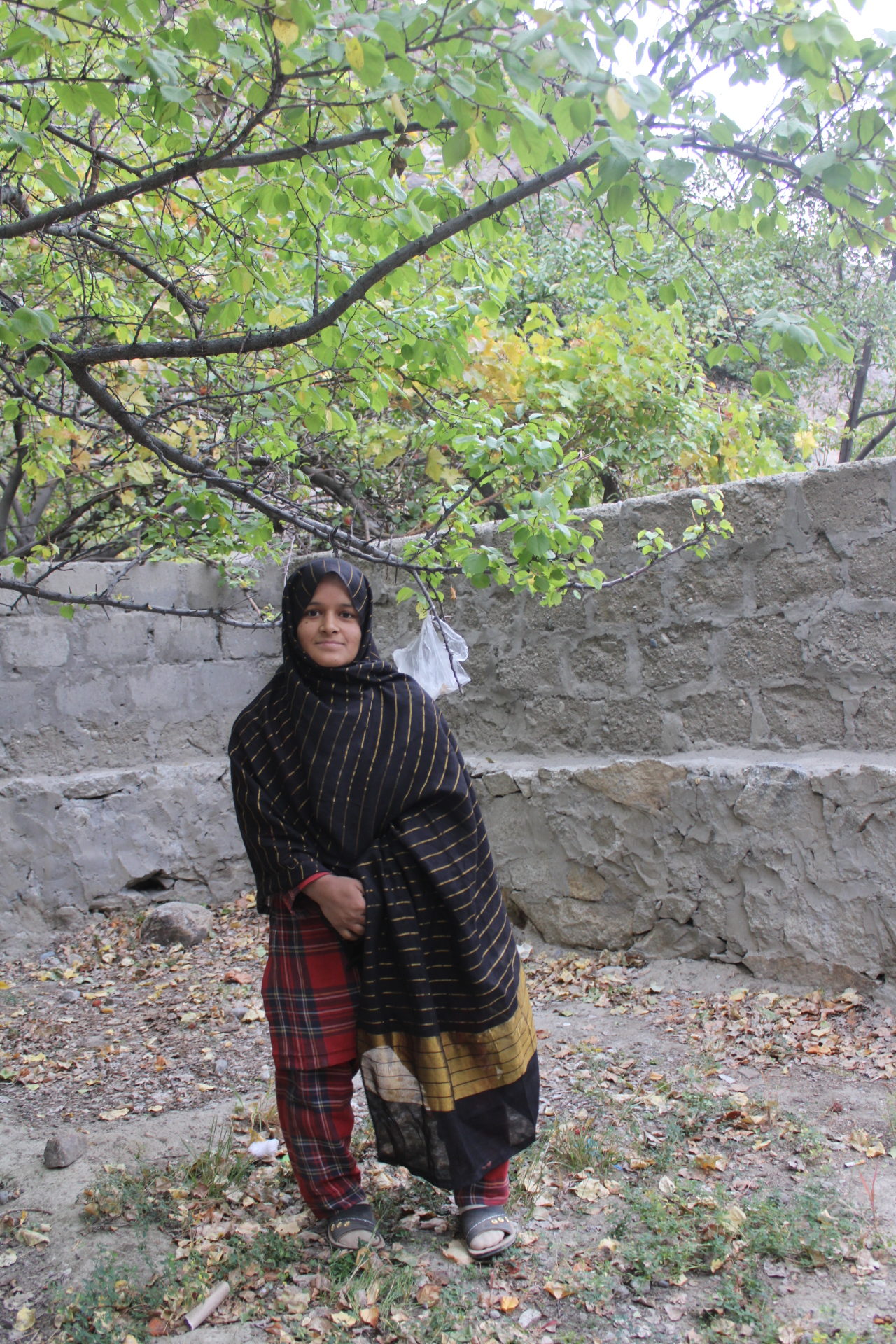
“By helping others, I feel like I have more courage…I love working as a CERT volunteer.”
Rubab Batool, CERT volunteer, Pari, Kharmang
The impact of this programme captures the struggle of the people and habitats that are shouldering the impacts of climate change. The programme is both empowering people to respond to disasters and emergencies, whilst preparing them to deal with their fallout. By guiding trainings, providing equipment and pairing this with local knowledge and ownership of response mechanisms, together we are supporting communities to be better equipped in the face of a growing number of climate disasters and emergencies.
‘Strengthening community and health system disaster preparedness in vulnerable areas of Gilgit-Baltistan’ is an 18-month, €750,000 programme funded by the European Union and implemented by the Aga Khan Foundation and the Aga Khan Agency for Habitat. Views and opinions expressed are however those of the author(s) only and do not necessarily reflect those of the European Union. Neither the European Union nor the granting authority can be held responsible for them.





